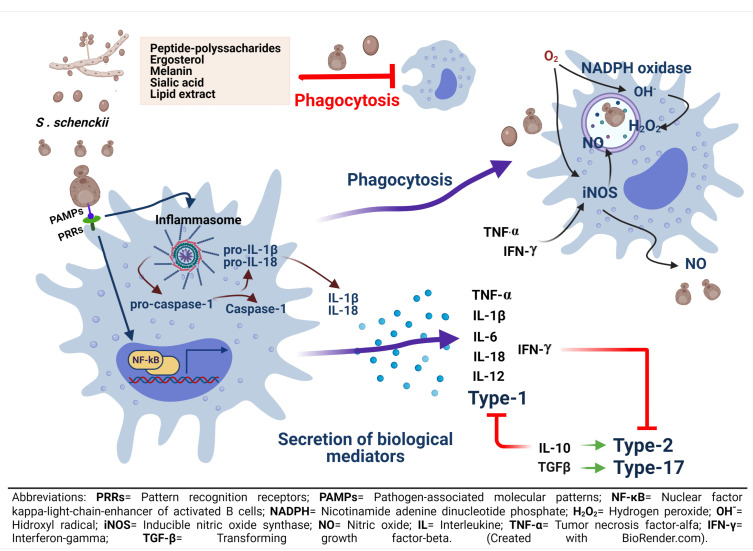Figure 2.
Recognition of S. schenckii and macrophages activation. After recognition of cellular PAMPs of S. schenckii by macrophage PRRs, phagocytosis and secretion of biological mediators can be activated. Phagocytosis and respiratory burst, with the participation of NADPH oxidase and the consequent formation of ROS, such as HO, will focus on fungal clearance within the phagosome. On the other hand, the formation of RNS, such as NO, with the participation of iNOS, should have the same function as ROS; however, NO has been associated with a state of immunosuppression after several weeks of infection. It is also important to note that cellular components of S. schenckii can prevent its phagocytosis by macrophages. In addition to phagocytosis, secretion of biological mediators associated with nuclear translocation of NF-B can occur. This translocation, with the participation of caspase-1, can promote the assembly of the NLRP3 inflammasome, inducing cytokine secretion. In any case, the secretion of biological mediators can promote either inflammatory (TNF-, IL-1, IL-6, IL-12, IL-18, IFN-) (cellular response type 1) or anti-inflammatory (IL10, TGF-) (cellular response type 2 and 17) processes. Interestingly, TNF- and IFN-) may be related with the activation of iNOS and the formation of NO. Furthermore, IFN- can also block type-2 and 17 responses, while IL-10 can block type 1 response.

